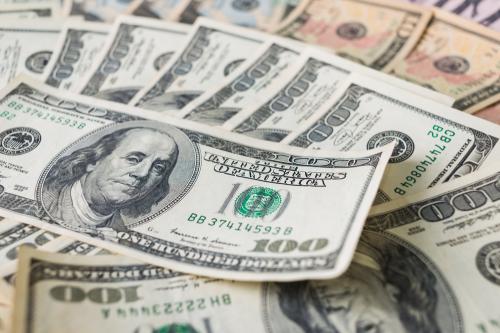Content from the Brookings-Tsinghua Public Policy Center is now archived. Since October 1, 2020, Brookings has maintained a limited partnership with Tsinghua University School of Public Policy and Management that is intended to facilitate jointly organized dialogues, meetings, and/or events.
The recent gyrations in the Chinese interbank market underscore that the chief risk to global growth now comes from China. Make no mistake: credit policy will tighten substantially in the coming months, as the government tries to push loan growth from its current rate of 20% down to something much closer to the rate of nominal GDP growth, which is about half that. Moreover, in the last few months of the year the new government will likely start concrete action on some long-deferred structural reforms. These reforms will bolster China’s medium-term growth prospects, but the short-term impact will be tough for the economy and for markets.
The combination of tighter credit and structural reforms means that with the best of luck China could post GDP growth in 2014 of a bit over 6%, its weakest showing in 15 years and well below most current forecasts. A policy mistake such as excessive monetary tightening could easily push growth below the 6% mark. Banks and corporations appear finally to be getting the message that the new government, unlike its predecessor, will not support growth at some arbitrary level through investment stimulus.
The dire performance of China’s stock markets in the past two weeks reflects this growing realization among domestic investors, although we suspect stocks have further to fall before weaker growth is fully discounted.
Slower growth… but no Armageddon
But the China risk is mainly of a negative growth shock, not financial Armageddon as some gloomier commentary suggests. Financial crisis risk remains relatively low because the system is closed and the usual triggers are unavailable. Emerging market financial crises usually erupt for one of two reasons: a sudden departure of foreign creditors or a drying-up of domestic funding sources for banks. China has little net exposure to foreign creditors and runs a large current account surplus, so there is no foreign trigger. And until now, banks have funded themselves mainly from deposits at a loan-to-deposit ratio (LDR) of under 70%, although the increased use of quasi-deposit wealth management products means the true LDR may be a bit higher, especially for smaller banks. The danger arises when banks push up their LDRs and increasingly fund themselves from the wholesale market. So a domestic funding trigger does not exist—yet.
The People’s Bank of China clearly understands the systemic risk of letting banks run up lending based on fickle wholesale funding. This is why it put its foot down last week and initially refused to pump money into the straitened interbank market. Interbank and repo rates have dropped back from their elevated levels, but remain significantly above the historical average. The message to banks is clear: lend within your means. This stance raises confidence that Beijing will not let the credit bubble get out of control. But it also raises the odds that both credit and economic growth will slow sharply in the coming 6-12 months.
If the economy slows and local stock markets continue to tumble, doesn’t this mean the renminbi will also weaken sharply? Not necessarily. Beijing has a long-term policy interest in increasing the international use of the renminbi, which can only occur if the currency earns a reputation as a reliable store of value in good times and bad. Allowing a sharp devaluation now runs against this interest, and also would be a sharp break from a long-established policy of not resorting to devaluation to stimulate growth, even at moments of severe stress (as in 1997-98 and 2008-09). So while our call on China growth has been marked down, our call on the renminbi has not.
Short-term pain is better than long-term stagnation
From a broader perspective, the biggest China risk is not that the country suffers a year or two of sharply below-trend growth. If that slowdown reflects more rational credit allocation and the early, painful stages of productivity-enhancing reforms, it will be healthy medicine. And even a much slower China will still be growing faster than all developed markets and most emerging ones.
The real risk is rather that the new government will show a lack of nerve or muscle and fail to push through financial sector liberalization, deregulation of markets to favor private firms, and fiscal reforms to curtail local governments’ ability to prop up failing firms, overspend on infrastructure, and inflate property bubbles. The old government wasted the last three years of its term doing none of these things despite the obvious need. The new leaders are talking a better game, but they have a year at most to articulate a clear reform program, begin implementation (liberalizing interest rates and freeing electricity prices would be a good start), and ruthlessly removing senior officials who stand in the way. If they fail to deliver, then the short-term slowdown could become a long and dismal decline.



Commentary
Get Ready For A Slower China
June 27, 2013